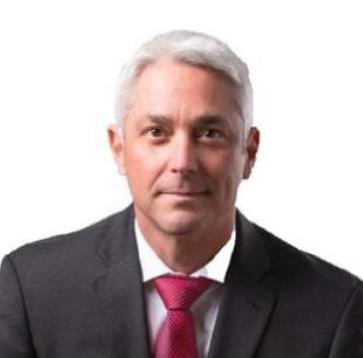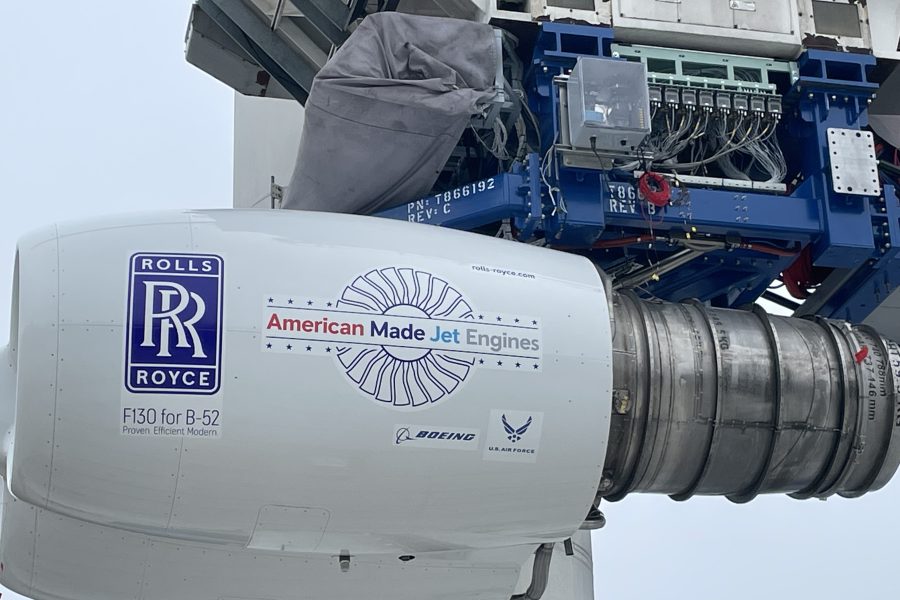It’s no secret that Rolls-Royce North America has been a trusted partner for the U.S. Air Force going back decades – even before the service was established in 1947.
From the company’s factories in Indianapolis, originally the Allison Engine plants, thousands of engines have been designed, developed and delivered to keep the Air Force flying. Today, the company is moving rapidly toward Critical Design Review for the Air Force’s B-52 Commercial Engine Replacement Program (CERP), which will help extend the life of the venerable BUFF by another 30 years.
Rolls-Royce has many other programs in operation or development that will benefit the nation’s airmen and women. We caught up with Ray Davis, senior vice president, business development, to learn more about what Rolls-Royce is up to. Davis, a retired U.S. Army brigadier general, is based in the company’s U.S. headquarters near Washington, D.C.
Can you give us an update on where the company is with the B-52 re-engining program?
“We were humbled and gratified that the Air Force selected the Rolls-Royce F130 engine and put their confidence in us to update this venerable aircraft. We focused closely on digital engineering in the design and risk-management areas. That helped speed the process along, lowered cost and reduced risk. We continue to see those benefits now. The first two F130 engines have been delivered and they’ve been very successful in tests in their new twin-pod configuration at the NASA Stennis Space Center in Mississippi. We’ll be finishing up that testing soon, and next up is Critical Design Review. We are making great progress toward that. We are working closely with the Air Force and Boeing to ensure we help make this program a great success and our team is laser focused on delivery.”
What other Air Force platforms are you involved in right now?
“Historically, Rolls-Royce powered iconic World War II aircraft like the P-51, P-38, P-39, and P-40, piston engines that were produced in our factories in Indianapolis. That’s where, beginning in the 1950s, we developed the T56 gas turbine engine for the C-130 transport. And we’ve been continually advancing gas-turbine technology ever since. Nowadays, we produce the AE 2100D3 engine for the current generation of C-130J aircraft. We provide our MissionCare service contract for those engines and are really overachieving in making sure they are ready to go whenever the next mission is. We are meeting or exceeding all contract parameters for that aftermarket service. We also produce the AE 1107C engines for CV-22 aircraft, and AE 3007H engines for the Global Hawk fleet.”
Where are these engines produced?
“All these engines are assembled and tested in our newly modernized facilities in Indianapolis. Rolls-Royce has invested $1 Billion into our Indianapolis facilities in recent years, in new technology, advanced manufacturing and test capabilities. This has transformed our facilities into the most modern and efficient among all locations that Rolls-Royce operates around the world. It means we are set up to deliver efficiently for the Air Force and other customers. But we really couldn’t do that without our dedicated American workforce. Our employees in Indianapolis take great personal pride in producing all those engines for the Air Force and making sure they are top-notch in quality and efficiency. You can see this dedication any time you walk through our factories. I should also note that our AE engine family, which powers C-130J, CV-22 and Global Hawk, has surpassed 86 million engine flight hours across all military and civil fleets combined. It’s proven to be incredibly reliable in all operations.”
What about future programs that the company is working on – space, hypersonics, or other cutting-edge technology?
“We have our own advanced technology unit, also based in Indianapolis, which is known as LibertyWorks. They design all types of high-tech projects. We have a growing Space development effort focused on micro nuclear systems to provide long-term power and propulsion solutions for civil and national security Space applications. Also on the nuclear side is our work on Project Pele, in which we are providing a reliable power conversion system that will be paired with a BWXT microreactor. That project will provide localized, safe nuclear power solutions for the Department of Defense and we are really proud to be a part of it.
“Hypersonics, or high-Mach, technology has also been a big area of emphasis within LibertyWorks and we currently have three different DoD contracts in progress on reusable high-Mach engines. We are also a founding industry partner of the new hypersonics test facility being developed at Purdue University in Indiana. We have partnered with Purdue on many, many advanced technology programs over the years and the university is a great pipeline for engineering talent as well. We are also having a lot of discussions around the Autonomous Collaborative Platforms project, and can see great opportunities there to support next-gen unmanned systems. Rolls-Royce is already powering multiple unmanned systems including Global Hawk and several Navy platforms, and we look forward to bringing that advanced technology to the Air Force for its ACS portfolio as it is developed.”
Speaking of future programs, how is Rolls-Royce supporting STEM efforts to prepare the scientists and technologists of tomorrow who will create the future of propulsion and aerospace?
“We are so proud to be the 2023 recipient of the AFA Chairman’s Award for supporting Aerospace Education and STEM programs. STEM is a huge focus for Rolls-Royce and we engage regularly with universities such as Purdue to fund research on campus for current students to work on. We also hire many engineering interns and new graduates every year. But even before students reach university age, we support STEM teachers nationwide as Platinum sponsor of the AFA’s Aerospace Education program, and as exclusive sponsor of the AFA National Teacher of the Year. We have funded these programs for many years and it is always a thrill to meet the outstanding and inspiring teachers who have been recognized and supported by AFA through these programs. It’s not only Rolls-Royce and other aerospace companies which will benefit from this – STEM efforts in schools which educate and inspire today’s students will benefit the Air Force down the road as well. We are really proud to be partnering with AFA on these efforts.”

Brig. Gen. Ray Davis, U.S. Army (retired), is Senior Vice President, Business Development, for Rolls-Royce Defense, based in Reston, VA.
